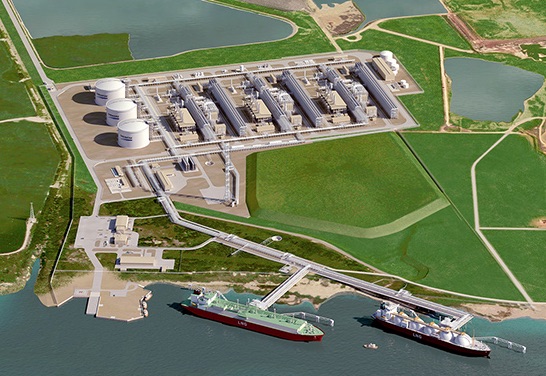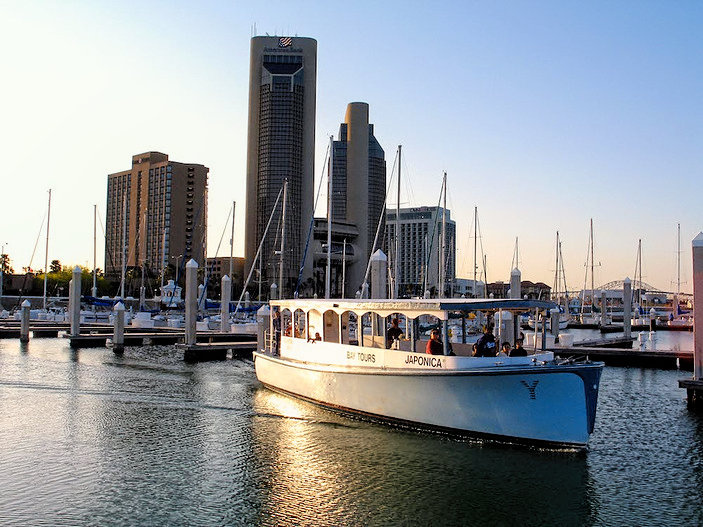
An artist’s rendering of the Cheniere Energy LNG plant in Corpus Christi. Courtesy illustration
Construction of two natural gas liquefaction trains at Corpus Christi Liquefaction LLC, can now begin. Papers with Bechtel Oil, Gas and Chemicals Inc. have been signed and the LNG project under way, home company Cheniere Energy Inc. announced recently. The first of three planned trains should begin operations in early 2018. The second train should go on line six to nine months later.
Cheniere Energy, Inc. is a Houston-based energy company primarily engaged in LNG-related businesses. The company has LNG facilities in Sabine Pass and Corpus Christi. The Corpus Christi project is designed for up to three trains, with expected aggregate nominal production capacity of approximately 13.5 mtpa of LNG, three LNG storage tanks with capacity of approximately 10.1 Bcfe and two LNG carrier docks.
“Including our LNG export facility at Sabine Pass, we now have six trains under construction, with first LNG expected at Sabine Pass from Train 1 by year end," said Charif Souki, Chairman and CEO of Cheniere. "For these major projects, getting to the point of commencing construction represents the culmination of years of dedicated hard work by all of our employees, Bechtel, other strategic partners, and legislative and government officials. We would like to thank all for their efforts and look forward to successful project execution in Corpus Christi."
The first two trains, along with two of three planned storage tanks, one of two planned docks and a 22-mile-long natural gas supply pipeline, are expected to cost around $11.5 billion. Around 225 new jobs should be created to run the operations.
Construction approval came within hours of approval by the U.S. Energy Department for Cheniere to export natural gas worldwide. This project is the sixth in the nation to receive approval for export. The gas will be exported from the Cheniere terminal along the La Quinta Channel in San Patricio County.
LNG, or liquified natural gas, is natural gas converted to liquid form for easy storage and transport by sea. In its gaseous state, natural gas takes up to 600 times the storage space. It is used for cooking, heating, generating electricity and manufacturing.





